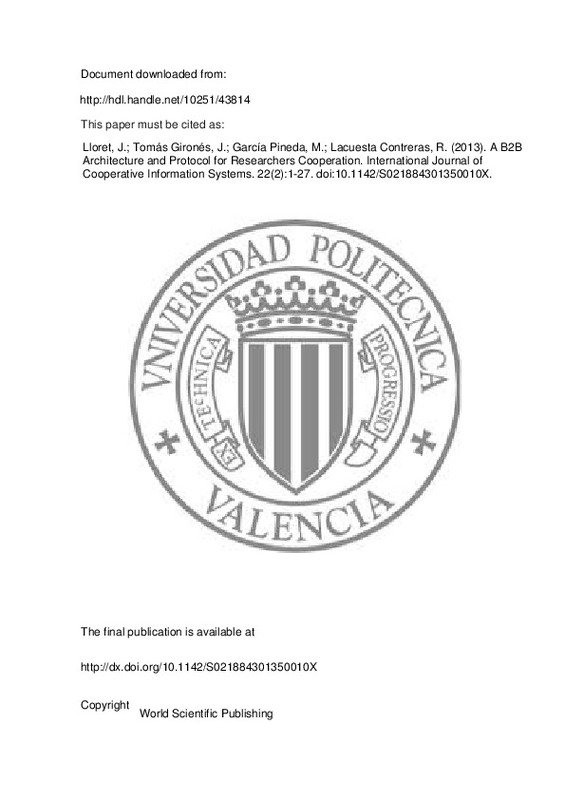B. Wellman and S. D. Berkowitz, Social Structures: A Network Approach (Cambridge University Press, Cambridge, 1988) pp. 19–61.
Wasserman, S., & Faust, K. (1994). Social Network Analysis. doi:10.1017/cbo9780511815478
Wellman, B., Salaff, J., Dimitrova, D., Garton, L., Gulia, M., & Haythornthwaite, C. (1996). Computer Networks as Social Networks: Collaborative Work, Telework, and Virtual Community. Annual Review of Sociology, 22(1), 213-238. doi:10.1146/annurev.soc.22.1.213
[+]
B. Wellman and S. D. Berkowitz, Social Structures: A Network Approach (Cambridge University Press, Cambridge, 1988) pp. 19–61.
Wasserman, S., & Faust, K. (1994). Social Network Analysis. doi:10.1017/cbo9780511815478
Wellman, B., Salaff, J., Dimitrova, D., Garton, L., Gulia, M., & Haythornthwaite, C. (1996). Computer Networks as Social Networks: Collaborative Work, Telework, and Virtual Community. Annual Review of Sociology, 22(1), 213-238. doi:10.1146/annurev.soc.22.1.213
Fulk, J., & Steinfield, C. (1990). Organizations and Communication Technology. doi:10.4135/9781483325385
B. Wellman and M. Gulia, Networks in the Global Village (Westview Press, Boulder, CO, 1997) pp. 331–367.
Marsden, P. V., & Campbell, K. E. (1984). Measuring Tie Strength. Social Forces, 63(2), 482-501. doi:10.1093/sf/63.2.482
Wellman, B., & Wortley, S. (1990). Different Strokes from Different Folks: Community Ties and Social Support. American Journal of Sociology, 96(3), 558-588. doi:10.1086/229572
Adamic, L., & Adar, E. (2005). How to search a social network. Social Networks, 27(3), 187-203. doi:10.1016/j.socnet.2005.01.007
Ebel, H., Mielsch, L.-I., & Bornholdt, S. (2002). Scale-free topology of e-mail networks. Physical Review E, 66(3). doi:10.1103/physreve.66.035103
Jung, J.-Y., Kim, H., & Kang, S.-H. (2006). Standards-based approaches to B2B workflow integration. Computers & Industrial Engineering, 51(2), 321-334. doi:10.1016/j.cie.2006.02.011
Lloret, J., Palau, C., Boronat, F., & Tomas, J. (2008). Improving networks using group-based topologies. Computer Communications, 31(14), 3438-3450. doi:10.1016/j.comcom.2008.05.030
Lloret, J., Garcia, M., Tomás, J., & Boronat, F. (2008). GBP-WAHSN: A Group-Based Protocol for Large Wireless Ad Hoc and Sensor Networks. Journal of Computer Science and Technology, 23(3), 461-480. doi:10.1007/s11390-008-9147-6
Lloret, J., Garcia, M., Bri, D., & Diaz, J. R. (2009). Study and performance of a group-based Content Delivery Network. Journal of Network and Computer Applications, 32(5), 991-999. doi:10.1016/j.jnca.2009.03.008
Lloret, J., Garcia, M., Tomas, J., & Sendra, S. (2010). A group-based architecture for grids. Telecommunication Systems, 46(2), 117-133. doi:10.1007/s11235-010-9279-1
Lin, T.-C., & Huang, C.-C. (2010). Withholding effort in knowledge contribution: The role of social exchange and social cognitive on project teams. Information & Management, 47(3), 188-196. doi:10.1016/j.im.2010.02.001
Maron, M. E., & Kuhns, J. L. (1960). On Relevance, Probabilistic Indexing and Information Retrieval. Journal of the ACM, 7(3), 216-244. doi:10.1145/321033.321035
Tomás, J., Lloret, J., & Casacuberta, F. (2005). Phrase-Based Alignment Models for Statistical Machine Translation. Lecture Notes in Computer Science, 605-613. doi:10.1007/11492542_74
Turel, O., & Zhang, Y. (Jenny). (2011). Should I e-collaborate with this group? A multilevel model of usage intentions. Information & Management, 48(1), 62-68. doi:10.1016/j.im.2010.12.004
Okuda, T., Tanaka, E., & Kasai, T. (1976). A Method for the Correction of Garbled Words Based on the Levenshtein Metric. IEEE Transactions on Computers, C-25(2), 172-178. doi:10.1109/tc.1976.5009232
[-]







![[Cerrado]](/themes/UPV/images/candado.png)


